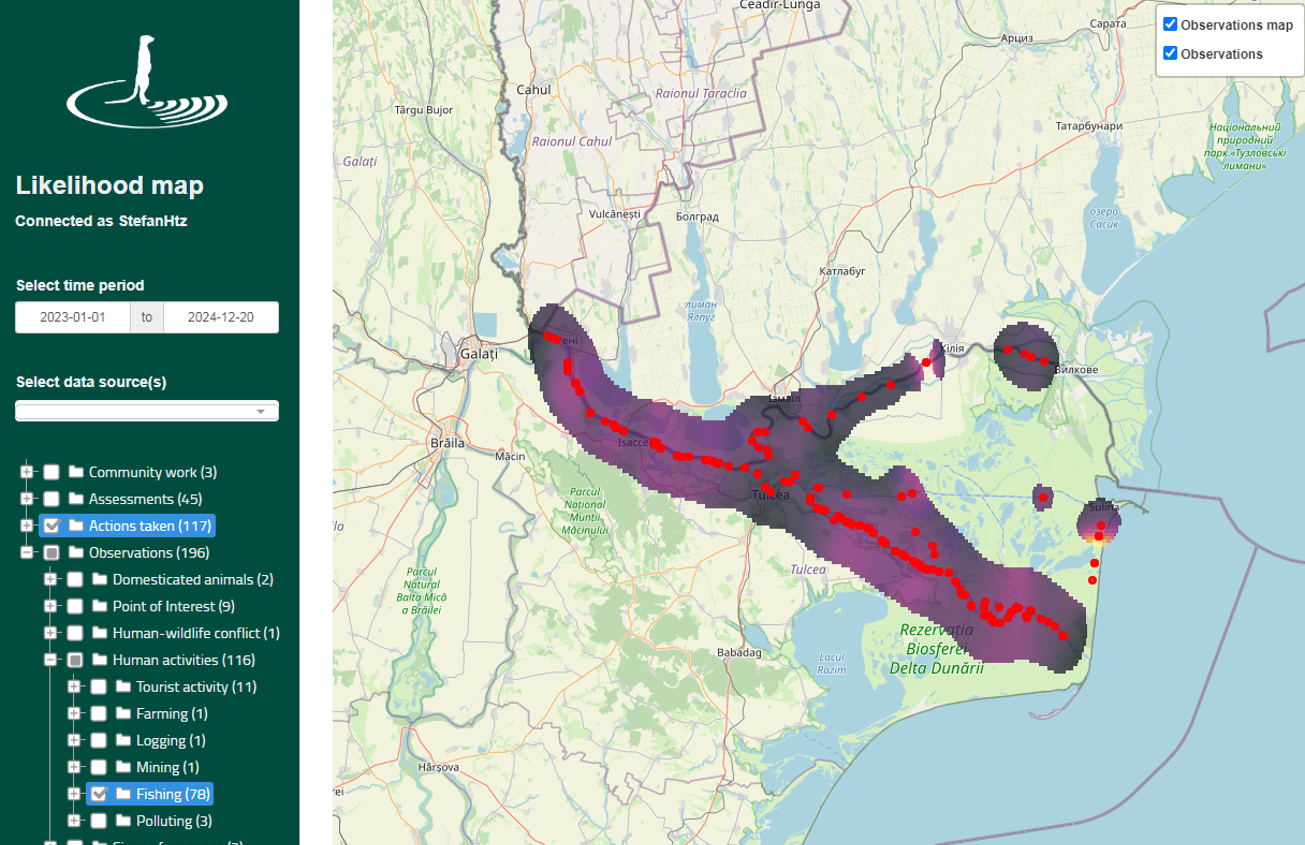“Real-time data collection and analysis with the Sensing Clues platform has improved our approach, enabling us to track sturgeon behaviour and take swift action to protect this endangered species.”
Danube Delta National Institute for Research and Development (DDNI), Romania - Preserving sturgeon species and mitigating human-wildlife conflicts in the Danube Delta through the use of the Sensing Clues platform
The Danube Delta Biosphere Reserve, a UNESCO World Heritage Site, is a biodiversity hotspot and a critical migration route for three endangered sturgeon species: the Beluga sturgeon, Stellate sturgeon, and Russian sturgeon. Despite protective measures, these species face persistent threats, particularly poaching, which continues to jeopardise their populations. Through its participation in the Nature FIRST project and with the integration of Sensing Clues' advanced conservation technologies, field experts from DDNI have significantly improved their capacity in the Danube Delta to monitor and mitigate human-wildlife conflicts, ensuring better protection for these iconic species.
Revolutionising field data collection
The introduction of Sensing Clues’ Cluey app offers new opportunities for data collection and analysis to identify potential human-wildlife conflict zones. The data collection app enables real-time collection of observations on fishing activities and other human impacts, ensuring data accuracy and immediate synchronisation among teams. During patrols conducted between January 2023 and December 2024, over 196 observations were recorded, 78 of which were related to fishing activities. By leveraging Sensing Clues tools, the team identified critical conflict hotspots along the Danube River and its branches, including the Sfântu Gheorghe and Sulina branches. Stefan Hont, Researcher at DDNI, highlights:
"Real-time data collection and analysis with the Sensing Clues platform has improved our approach, enabling us to efficiently track sturgeon behaviour and take swift action to protect this endangered species."
Likelihood Map: Data analysis results using the analytical tool
Data-driven insights for targeted interventions
Using the analytical tools available on the Sensing Clues platform, researchers pinpointed areas with the highest risk of poaching. These insights, combined with a specialised "Sturgeon Agent-Based Model" developed by Wageningen University & Research and Anna Davison, enabled the identification of high-risk periods and locations for illegal fishing. The findings have directly influenced on-the-ground conservation actions. Patrols along the river – totalling over 1,000 kilometres across 10 observation days – were targeted at high-risk areas, ensuring efficient resource use. Additionally, insights from the project are shaping broader conservation policies aimed at safeguarding sturgeon populations.
“By integrating technology with fieldwork, we’ve proposed a new approach for identifying potential human-wildlife conflict areas to tackle the challenge of illegal fishing,” explains Stefan. “This scalable approach can serve as a model for similar challenges globally.”
A vision for the future
The successful application of the Sensing Clues conservation technologies in the Danube Delta highlights the potential of innovative tools to enhance conservation outcomes. Beyond improving efficiency and accuracy, this collaboration has strengthened efforts to protect some of the world's most endangered species. As the project continues, the integration of field data with advanced modelling tools will remain central to mitigating human-wildlife conflicts and preserving biodiversity in one of Europe’s most unique ecosystems. Through collaboration, technology, and targeted action, the Danube Delta is proving that modern conservation approaches can make a tangible difference for wildlife and local communities alike.



